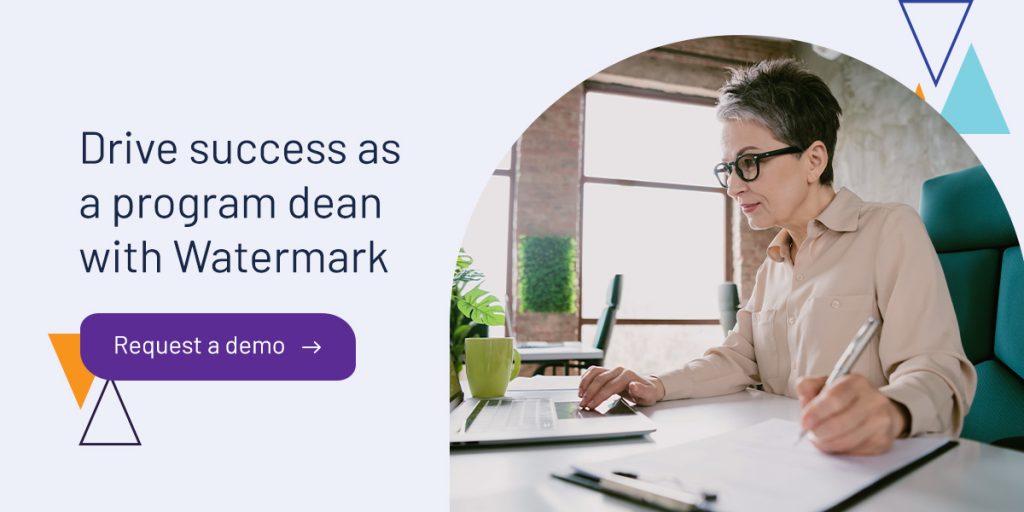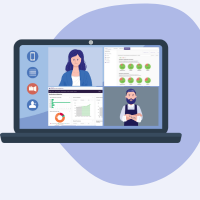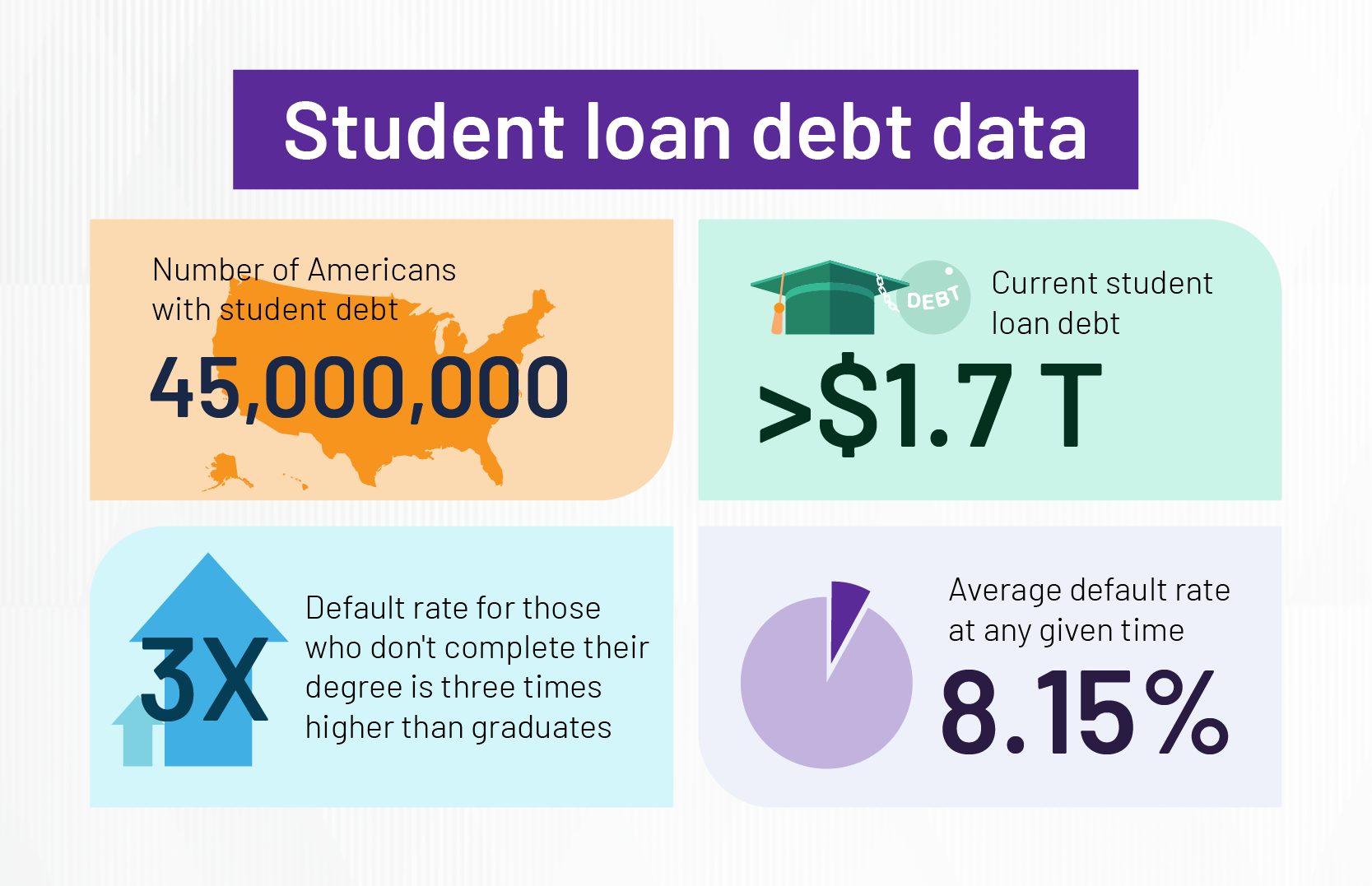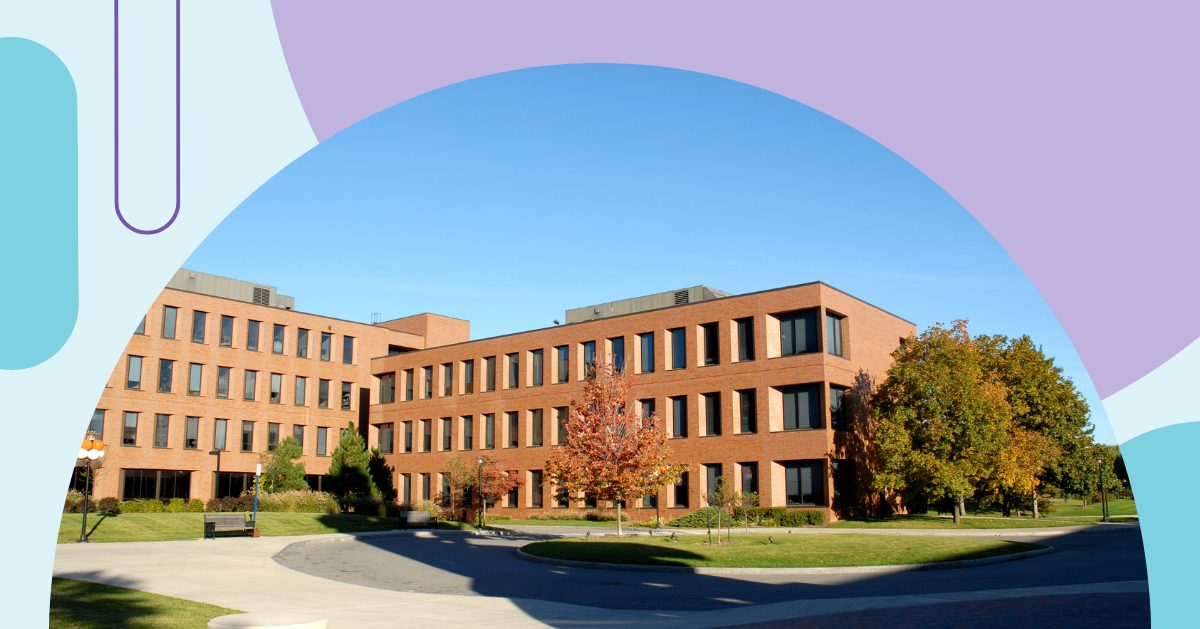
As a program dean, you play a vital role in the success of your school, students, and the institution as a whole. You also have one of academia’s most complex roles. You manage people, ideas, systems, and resources as you steer your program toward its objectives.
This level of responsibility can be challenging. But the benefits of your successes ripple throughout your institution. When you perform well, students perform well, their communities gain valuable skills, and your college thrives. If you want to level up your leadership, this article will help you understand how to be the most effective program dean you can be.
7 qualities of a highly effective program dean
Your leadership results flow from your leadership character. If you have objectives you aim to achieve, start by asking yourself what kind of leader would produce those results. Then, focus on developing the qualities of the leader you want to be.
To help you define your leadership character, here are the seven characteristics the most effective program deans have in common:
- Collaborative: Effective deans know it takes various perspectives to see every facet of an academic program. This motivates them to collaborate with stakeholders across the institution and beyond. For example, collaboration is crucial for developing and improving curricula. Faculty, students, and community members can all help a dean understand the needs a program must meet.
- Motivational: Effective deans have a vision and inspire their faculty and students to pursue it. This can be challenging because academia attracts independent thinkers. The key is to convey a compelling vision and show how it connects with each person’s values to pursue it. A persuasive vision, clear communication, and willingness to lead by example are a potent recipe for motivation.
- Humility: Effective deans are humble. Your role comes with a lot of responsibility, and you deserve credit for your contributions. But your role is also that of a servant leader who sets others up for success. Staying focused on the achievements of your faculty and students ultimately reflects well on you, motivates your team, and makes you more attractive to collaborate with.
- Attentive: Effective deans recognize the need to assume those around them feel underappreciated. They strive for empathy with those around them and look for opportunities to acknowledge faculty and student accomplishments. They also value the input of others and are willing to hear people out about their needs and ideas.
- Dedicated: Effective deans inspire others by committing to the program’s success. Model diligence, consistency, and integrity in your work ethic as you set the tone for those around you.
- Strategic: Effective deans have a strategy guiding how they use resources. These resources include people, funds, and the dean’s own time. Deans have endless potential tasks to throw these resources at. Instead, effective deans prioritize initiatives that impact key outcomes the most. Time and resource management skills are key dean competencies.
- Resilient: Effective deans understand that the road to success has speed bumps and detours. Cultivating the foresight to avoid setbacks is a valuable skill. But some setbacks are bound to happen. The best college deans can navigate these challenges while maintaining high standards and forward momentum in their programs.
10 leadership tips for program dean effectiveness
Once you know what kind of leader you want to be, you’re ready to translate that vision into action. These ten techniques will help you shine in your leadership role.
1. Active listening
Active listening is an essential leadership skill. It encourages others to share their input, helping you correct biases and make more informed decisions. It also builds relationships, improving your team’s morale and willingness to follow your leadership.
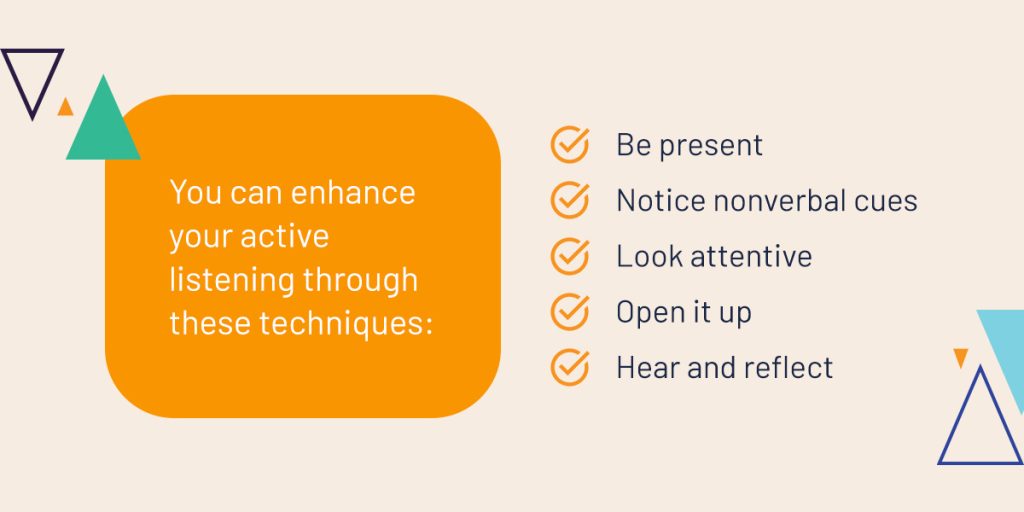
You can enhance your active listening through these techniques:
- Be present: Focus all your attention on the other person and what they share. Ignore distractions like smartphone notifications or other people nearby.
- Notice nonverbal cues: Nonverbal communication is essential for interpreting meaning and attitude in conversation. Notice facial expressions, gestures, posture, and other nonverbal cues. Respond to the feelings these convey as well as the words your conversation partner says.
- Look attentive: Your conversation partner will notice your body language, too. Ensure you’re sending the right non-verbal messages. Smile, use open gestures, and maintain eye contact 50-70 percent of the time with natural breaks. Remember to adapt your approach based on the cultural context and respect any boundaries your conversation partner expresses.
- Open it up: Ask open questions to invite thoughtful responses. For example, “What do you think is the best way forward?” These questions help your conversation partner feel you value their input. They also allow you to access insights you would otherwise have missed.
- Hear and reflect: After giving your conversation partner a chance to share, summarize what you heard in your own words. Ask them if they feel your summary is accurate. This is a great aid to comprehension.
2. Clear communication
Active listening goes a long way toward improving communication. But leading effectively also requires you to address your students and faculty. Whether you’re responding to questions and concerns or communicating proactively, these tips will help improve your communication:
- Clarity: Use straightforward and specific language. Answer questions like “what,” “why,” and “how” in your communications. Welcome clarifying questions. Communicating for understanding is one of a dean’s key competencies.
- Transparency: Be open about your program’s objectives, opportunities, and challenges. Acknowledge setbacks and mistakes without shifting blame or being defensive.
- Frequency: Communicate often to keep everyone on the same page about new developments and progress updates. Use regular communication to recognize contributions and reinforce shared goals.
- Adaptability: Adjust your communication to the audience you’re addressing. For example, use different levels of formality and technicality with undergraduate students, senior faculty, or deans from other departments. At the same time, be authentic with your voice. As long as you follow communication best practices, you have room to express your natural personality.
3. Collaborative culture
Unlock the benefits of teamwork by initiating collaborations in your school. Collaboration opportunities in and beyond your program include:
- Introducing group projects into the curriculum for students.
- Inviting faculty to collaborate with you on program design and improvement.
- Encouraging faculty to collaborate on research articles and projects.
- Engaging with other program deans to share best practices and conduct interdisciplinary studies.
4. Four-dimensional mentorship
As a program dean, you’re the lead mentor for all the faculty and students involved in your program. Effective leadership means empowering those around you to grow and to support the growth of others. One of the best ways to do this is through mentorship, which improves job satisfaction and productivity among faculty. Here are four dimensions of mentorship you can encourage in your program:
- Self-mentorship: This means assessing one’s own strengths and weaknesses and seeking resources and opportunities to improve oneself. To promote self-mentorship, provide your faculty and students with self-assessment tools and share elective training opportunities. Most importantly, let them see you modeling self-mentorship in your own professional journey.
- Vertical mentorship: This is the traditional mentorship relationship where a more experienced faculty member or student mentors a less experienced peer. Aim to encourage and incentivize vertical mentor relationships within your program.
- Reverse mentorship: This is vertical mentorship in the opposite direction — junior students or faculty share insights with their seniors. Reverse mentorship helps juniors feel valued while seniors benefit from fresh perspectives on technology, diversity, and other areas.
- Horizontal mentorship: Peer mentorship or horizontal mentorship involves faculty or students with a similar level of experience. These peers can be a valuable source of support, because of their shared experiences and similar challenges.
5. Motivational leadership
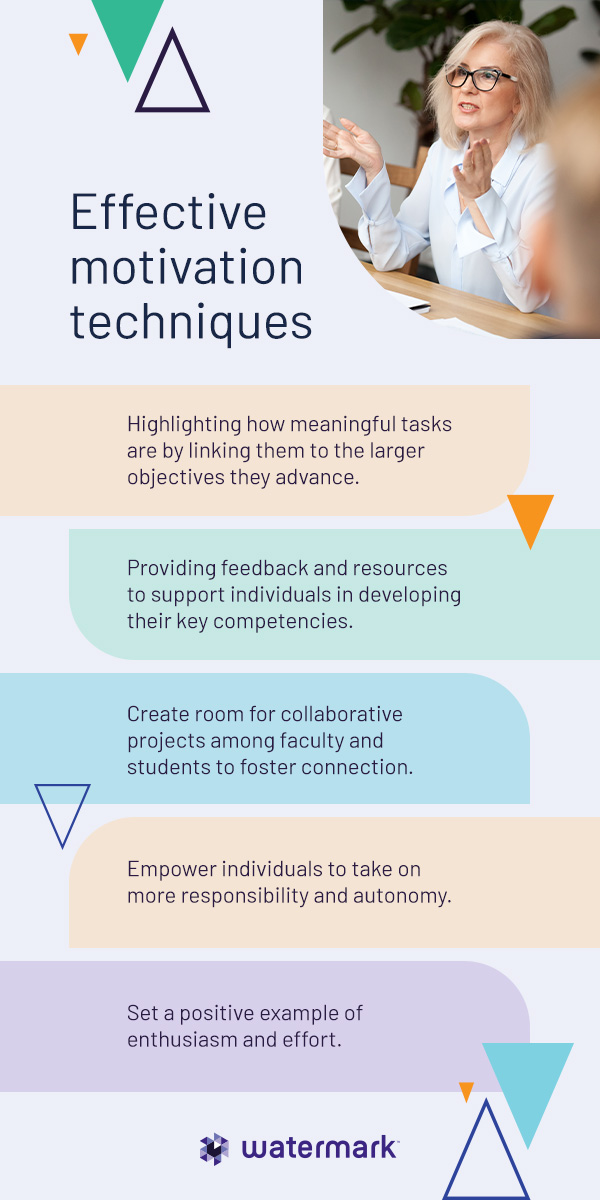
Motivating your faculty and students can be challenging. But with the right approach, you can inspire everyone to do their part in achieving the program’s goals. Effective motivation techniques include:
- Highlighting how meaningful tasks are by linking them to the larger objectives they advance.
- Providing feedback and resources to support individuals in developing their key competencies.
- Create room for collaborative projects among faculty and students to foster connection.
- Empower individuals to take on more responsibility and autonomy.
- Set a positive example of enthusiasm and effort.
6. Constant appreciation
Retaining a team of engaged faculty members with high job satisfaction depends on showing appreciation. Use every communication and every faculty event as an opportunity to express appreciation. Recognizing efforts, accomplishments, and milestones helps promote engagement and retention on your team. Ways to show appreciation include:
- Verbal affirmations
- Handwritten notes
- Gifts
- Financial bonuses
- Celebrations
7. Regular celebrations
Celebrations are always fun, but they’re also crucial to individual and team well-being. Aim to create a culture of regular celebrations in your department. Whether the occasion is small or big, celebrate wins like:
- Individual achievements and career milestones among faculty
- Progress in student performances
- Departmental and institutional accomplishments
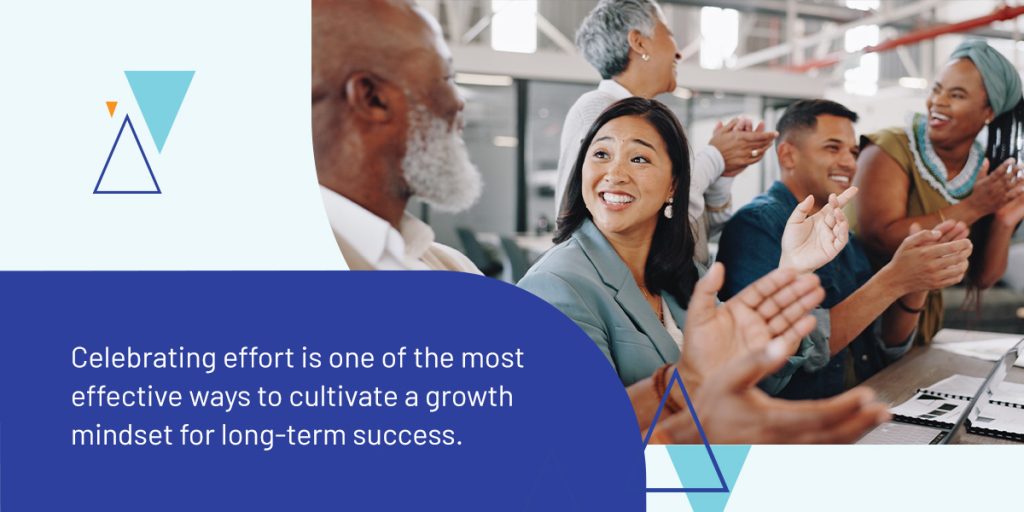
Celebrating accomplished objectives and KPI progress milestones will increase everyone’s motivation to chase the next target. But remember to recognize effort as well as results. Celebrating effort is one of the most effective ways to cultivate a growth mindset for long-term success. A growth mindset culture supports more adaptive and innovative attitudes.
8. Adaptable attitude
Academic, professional, and social environments are constantly changing. Some days, it will feel like unpredictability is the most predictable part of your job. That’s why adaptability is necessary to drive success as a dean. Try to see unexpected situations as opportunities to practice your agility. These opportunities include:
- Budget shifts: Sometimes unforeseen expenses arise, or projected funding falls through. Other times, your school may have a more profitable year than anticipated. In either case, you need to work with your financial staff and other stakeholders to ensure you allocate funds where they will have the greatest positive impact on your program objectives.
- Regulatory changes: New state or federal regulations can impact how you manage your program. Stay informed about regulatory developments to maintain compliance. For example, you may need to adjust your faculty recruitment strategy or update your curriculum to meet new state licensure requirements.
- Accessibility concerns: As social contexts shift and we grow in understanding the challenges diverse groups face, taking new steps to make your program more accessible may be necessary. Use student progress and admissions data to look for disparities and engage stakeholders to explore equitable solutions.
- Curriculum updates: Continuous improvement is a cornerstone of program quality, and curriculum content is a key improvement area. As your field of scholarship and its related professions advance, ensure your curriculum stays in step. Incorporate assessment data reviews and stakeholder engagement into a systematic improvement strategy.
9. Strategic priorities
Given the scope of your responsibilities as a dean, prioritizing well is essential for you to make an impact where it matters most. Here are two key concepts you need for effective prioritization:
- Key performance indicators (KPIs): Your KPIs are the most important outcomes you’re responsible for. These should be measurable and relevant to your vision and mission for the program. Average student performance, retention, and program faculty research output are three important KPIs for program deans, but you can identify others.
- The Pareto Principle: This principle is also called the “80/20 rule.” It states that most of your outputs — around 80 percent — come from a few crucial inputs — around 20 percent. If you have a long list of KPIs, identify the 20 percent that matter most. List the tasks that drive these, and commit most of your time to only the 20 percent of tasks with the biggest impact on your KPIs.
There is no magic number of priorities. But if your to-do list has grown unwieldy, ranking the items and deleting or delegating the bottom 80 percent will likely help you produce more results in the most significant areas.
10. Model conduct
As a program dean, your behavior sets the tone for everyone else in the program. This influence means you’re already a role model. The challenge is to be a positive one!
Although your role entails different functions than that of a lecturer or student, your attitude and approach will shape how others handle their work. So, identify the qualities everyone must embody for the program to achieve its objectives. Then, commit to exemplifying these qualities in an authentic but visible way. Qualities to focus on include:
- Transparent and respectful communication
- Appreciation and encouragement of others
- Eagerness to collaborate
- Professionalism and punctuality
- Respect for diversity
- Diligence in fulfilling work commitments
- Willingness to mentor and accept mentorship from others
- Effective time management and prioritizing
- Active and open-minded listening
- Resilience and agility in the face of challenges
Drive success as a program dean with Watermark
It’s challenging to be an inspirational leader when you feel overwhelmed by all your responsibilities. Streamline your work and enhance your program with Watermark’s Educational Impact Suite (EIS). Our software tools help you:
- Track student progress and faculty workflows.
- Centralize assessment planning and outcomes.
- Get more data with less effort for better decisions.
- Define and track KPI objectives.
- Collaborate for continuous program improvement.
- Show regulatory and accreditation compliance.
- See faculty milestones and achievements to celebrate.
Request a demo to discover more about how our software can help you drive results as a program dean.
